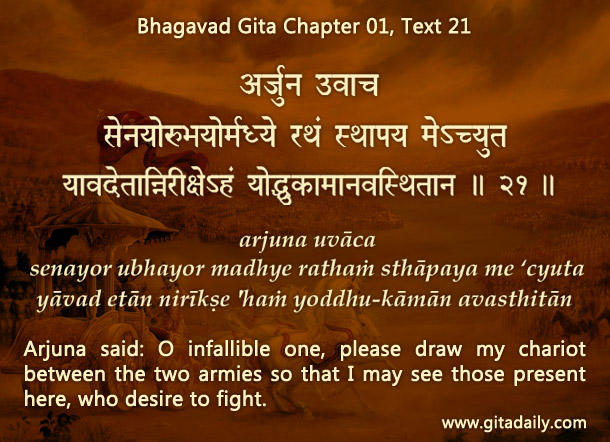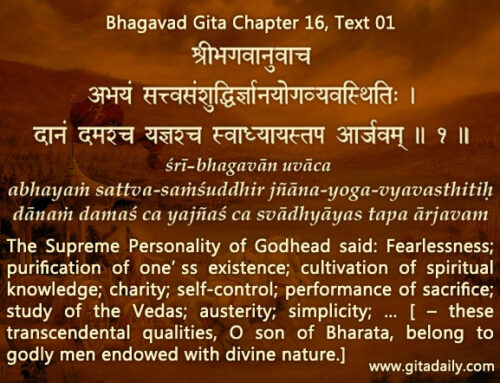The Bhagavad-gita was spoken in no man’s land. On the Kurukshetra battlefield, when the two armies had assembled just before the climactic Mahabharata war, the battle lines were clearly drawn. In that setting, when Arjuna asked Krishna to take his chariot between the two armies (01.21), he placed himself in the territory between the two warring parties, that is, in no man’s land.
That place where the Gita was spoken has become a sacred shrine, known as Jyotisaar, the essence of illumination. This eponym highlights the Gita’s status as the essence of the Upanishads’ illuminating wisdom. Thus, that no man’s land has become God’s land, a place of pilgrimage for millions.
No doubt, all land is God’s land – everything belongs to God. Still, his presence is much more manifest at certain places and his grace is much more accessible there – so, such places are especially called God’s land. Jyotisaar is one such place.
How did the no man’s land at Kurukshetra become God’s land? By mercy. It was here that Krishna, by his presentation and his presence, took Arjuna to exalted levels of wisdom and consciousness that the world has rarely seen before or after. Though Arjuna’s doubts had taken him to no man’s land, his sincerity in turning to Krishna for guidance amidst his doubts not only brought him out of no man’s land, but also enabled him to be a part of the momentous event that created for the world’s purification a lasting spiritual legacy, a God’s land.
Similarly, our heart may feel like no man’s land, especially when problems surround us, people misunderstand us, and we seem all alone. If we follow in Arjuna’s footsteps and seek guidance in Krishna’s words, he will transform our heart into a holy place, where his presence will solace, strengthen and illumine us.
To know more about this verse, please click on the image
Explanation of article:
Podcast:




Hare Krishna prabhuji,
This article brought tears in my eyes. What a insight. Made so much sense.
Thank you.
God bless you.
mercy on animals will certainly lands you in GOD’S land